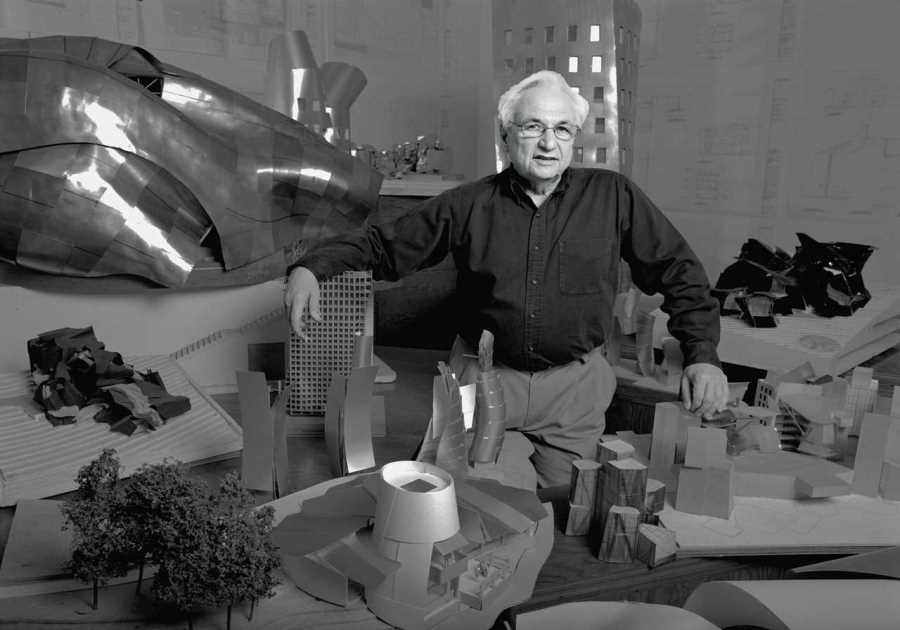Edward Berthelot/Getty Images
- Carhartt got its start as a workwear brand in Detroit in the 1800s.
- The brand weathered the World Wars, the Great Depression, and shifts in the retail world.
- Today, Carhartt is equally popular among blue-collar workers and streetwear connoisseurs.
Back in 1889 when Hamilton Carhartt opened his first workwear factory, he probably couldn't have predicted that the brand would one day be worn by both blue-collar workers and some of the world's biggest hip-hop stars.
But that's exactly what Carhartt has become: one of only a handful of companies sitting in the middle of a very small Venn diagram.
So how did the 133-year-old retailer survive multiple wars and the Great Depression? And how did it become so beloved by blue-collar laborers, skaters, models, rappers, and Brooklynites?
Read on to find out.
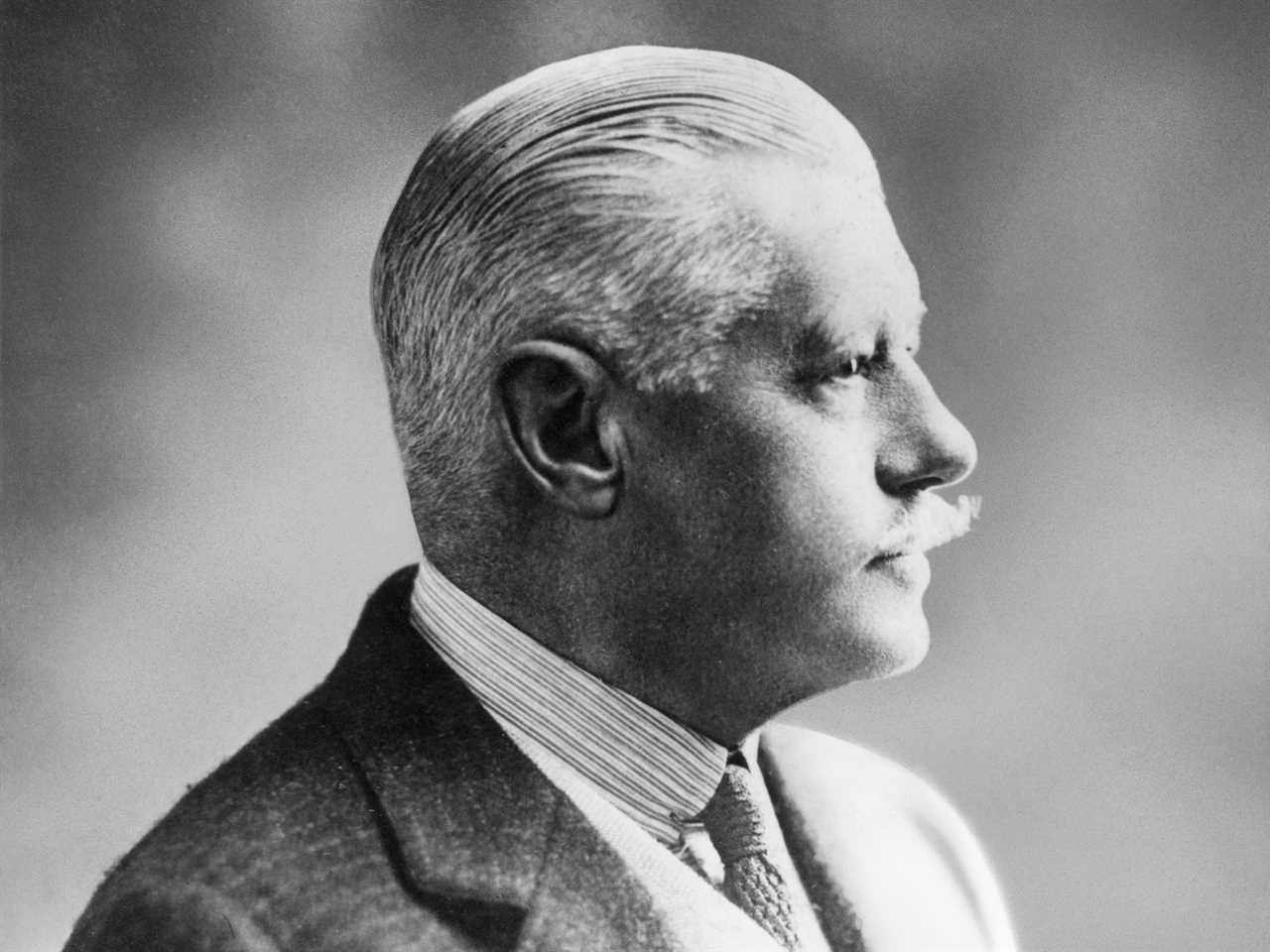
Carhartt
The company's founder, Hamilton Carhartt, had been running a furnishing business but wanted to create and sell his own products.
After some early failures, Carhartt embarked on market research, and a conversation with a railroad engineer sparked an idea: he saw a gap in the market for high-quality workwear that would hold up over time, according to the Detroit Historical Society.
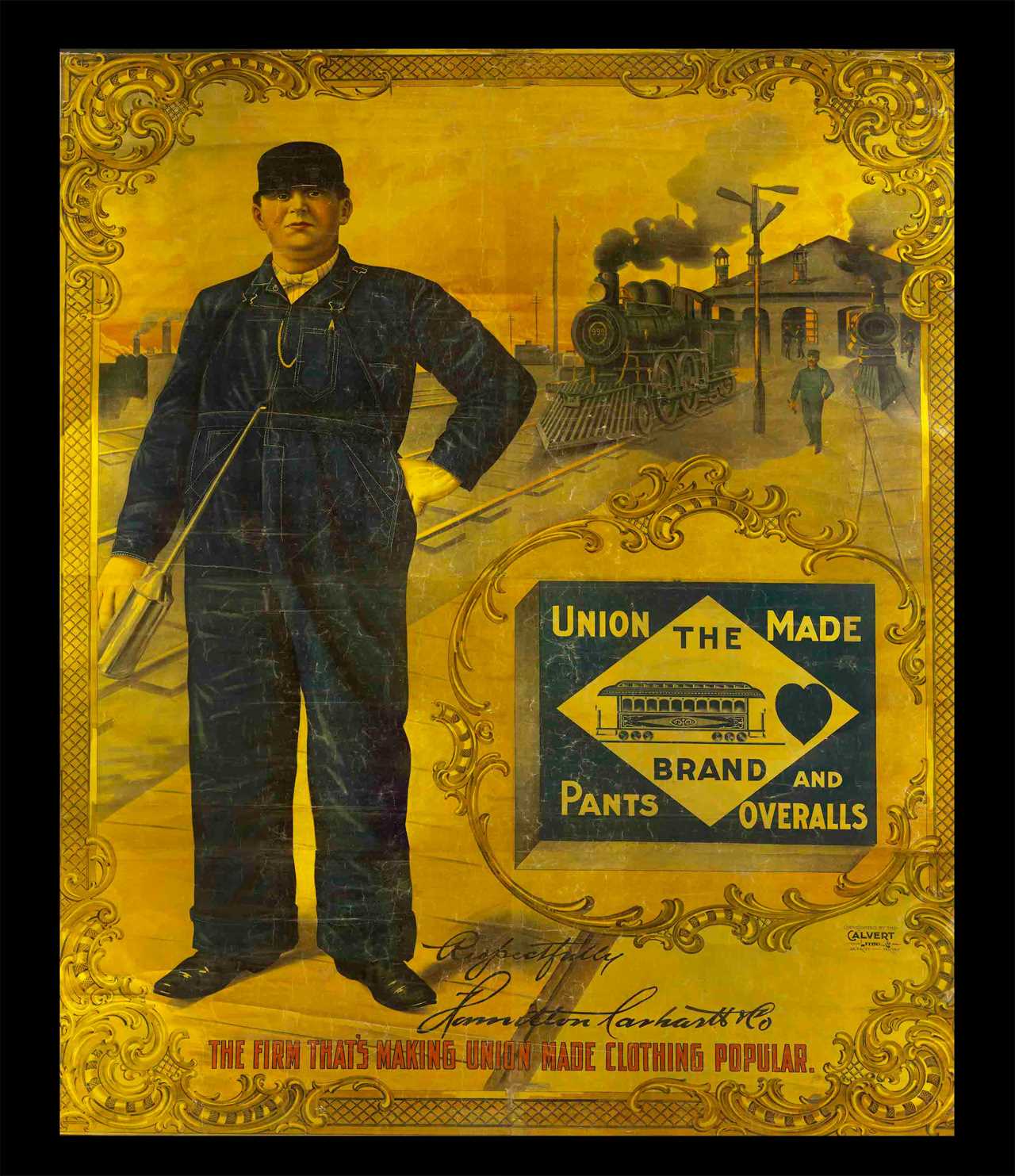
Carhartt
He started manufacturing overalls out of denim and duck cloth, or canvas, and came up with a slogan: "Honest value for an honest dollar."
In the early days, Carhartt apparel was made by just five employees and two sewing machines in a loft in Detroit, according to Carhartt.
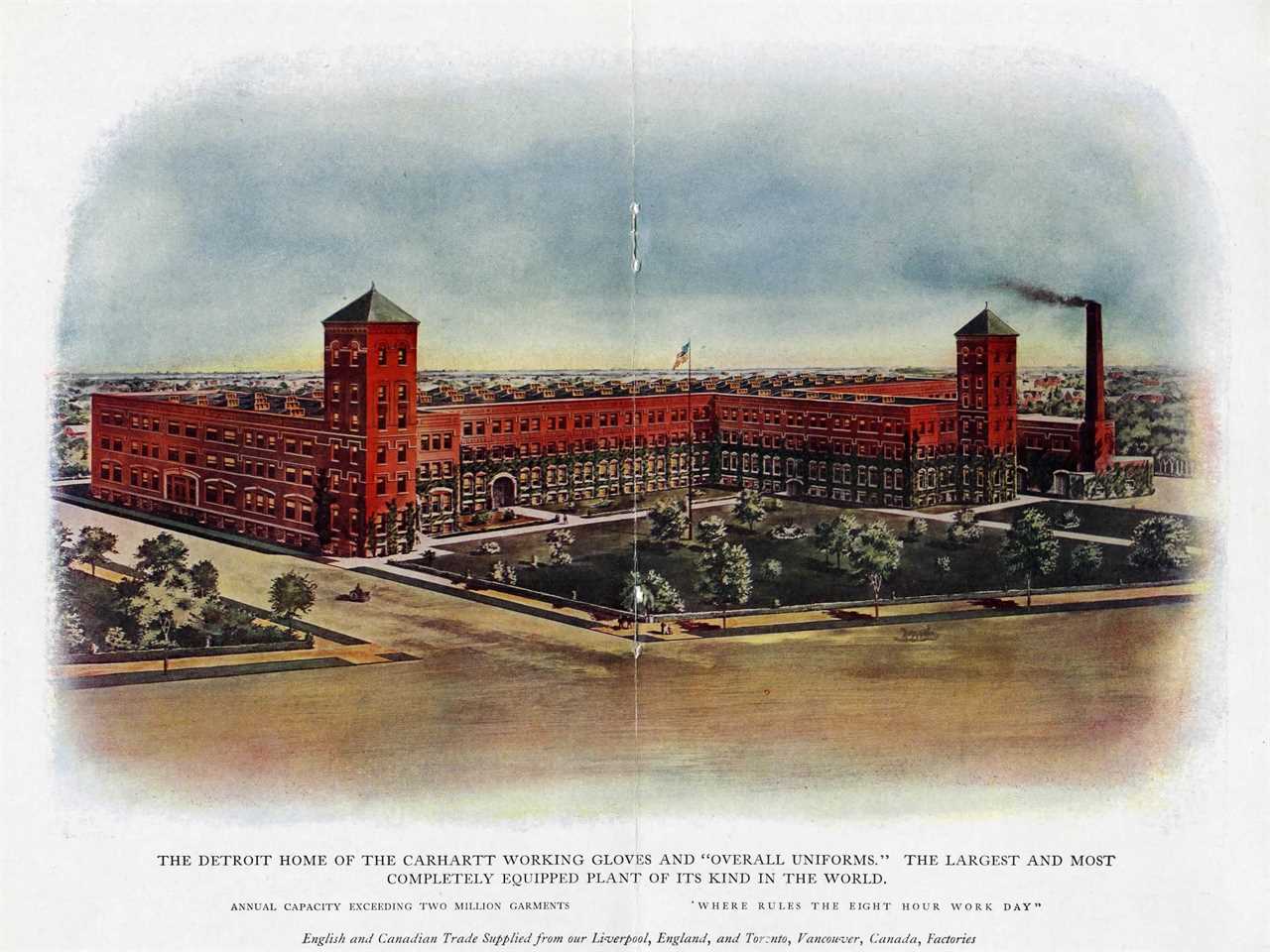
Carhartt
Carhartt's footprint included mills in South Carolina and Georgia and production centers in Atlanta, Dallas, San Francisco, the company's native Detroit, and even outside the US, including Liverpool and Canada, according to Carhartt.
But when the Depression hit in the late 1920s, Carhartt scaled back its operations. By 1930, only three plants were left, according to the Detroit Historical Society.
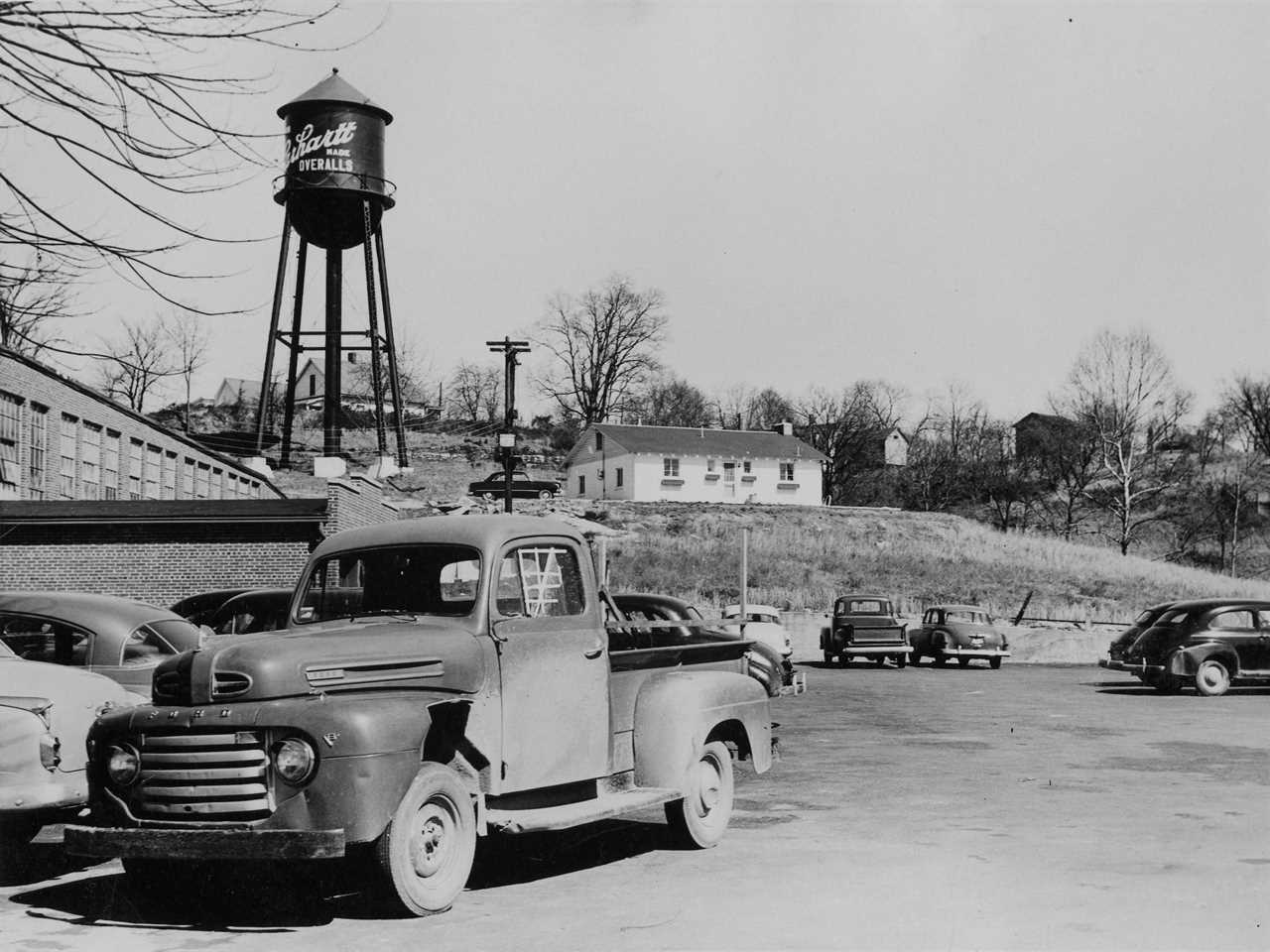
Carhartt
In the early 1930s, the Carhartts established a campaign they dubbed "Back to the Land." The idea was to bring production to impoverished places throughout the US that would benefit from the opening of production facilities, according to The New York Times.
The campaign had the dual benefit of endearing Carhartt to new customers, and soon, ranchers and farmers started buying Carhartt too.
The company still operates facilities in Kentucky and Tennessee — the original Kentucky factory houses Carhartt's supply chain operations — and Carhartt still uses the "Back to the Land" slogan, though it now seems to be aimed at urging customers to spend more time outdoors — in Carhartt apparel, of course.
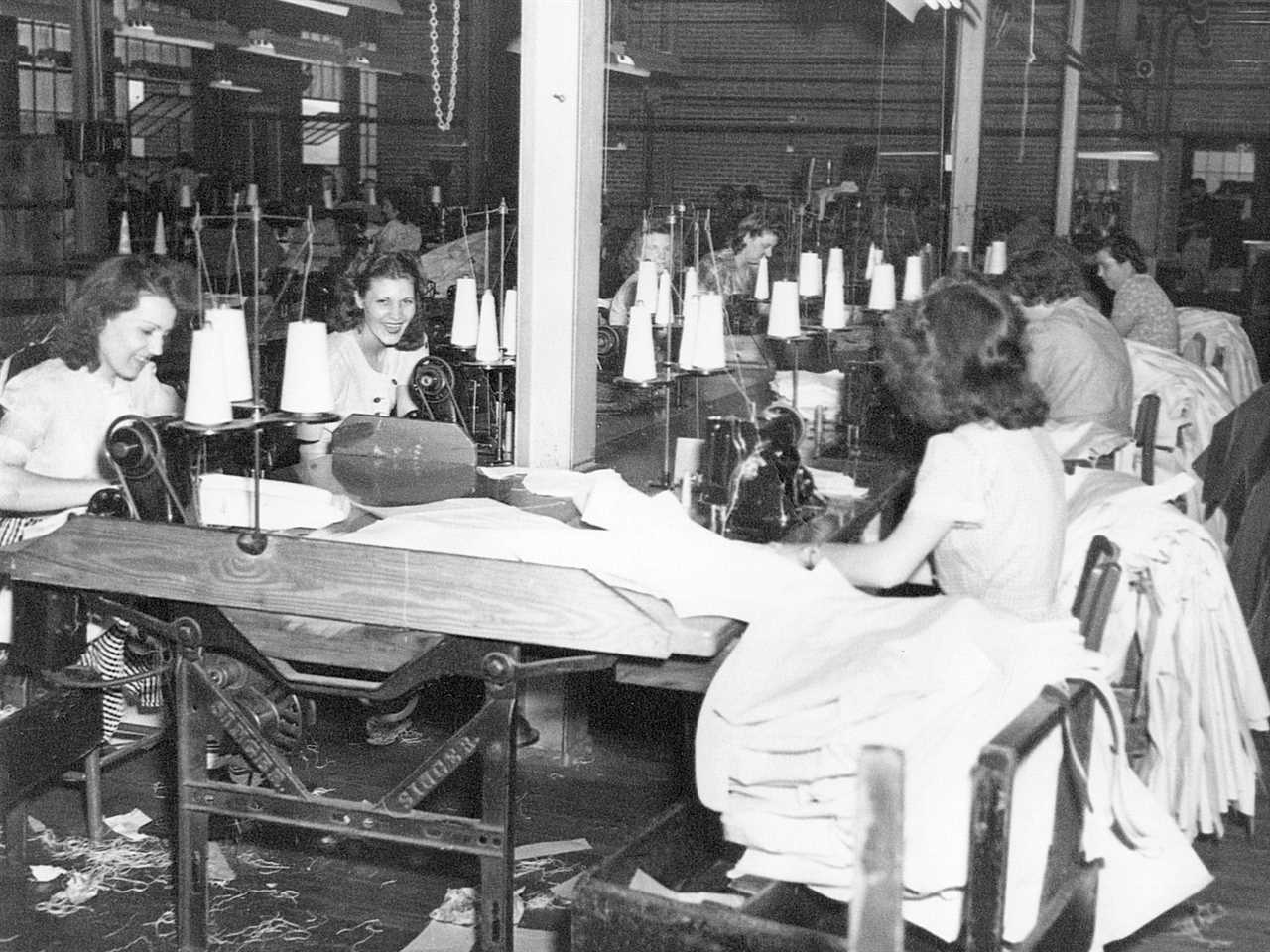
Carhartt
During World War I, the company offered up seven of its plants to the government to produce military uniforms.
And during the second World War, the brand made coveralls for military members and jungle suits for Pacific-based Marines. Women heading to work in the factories during World War II got Carhartt coveralls, too, according to Carhartt.
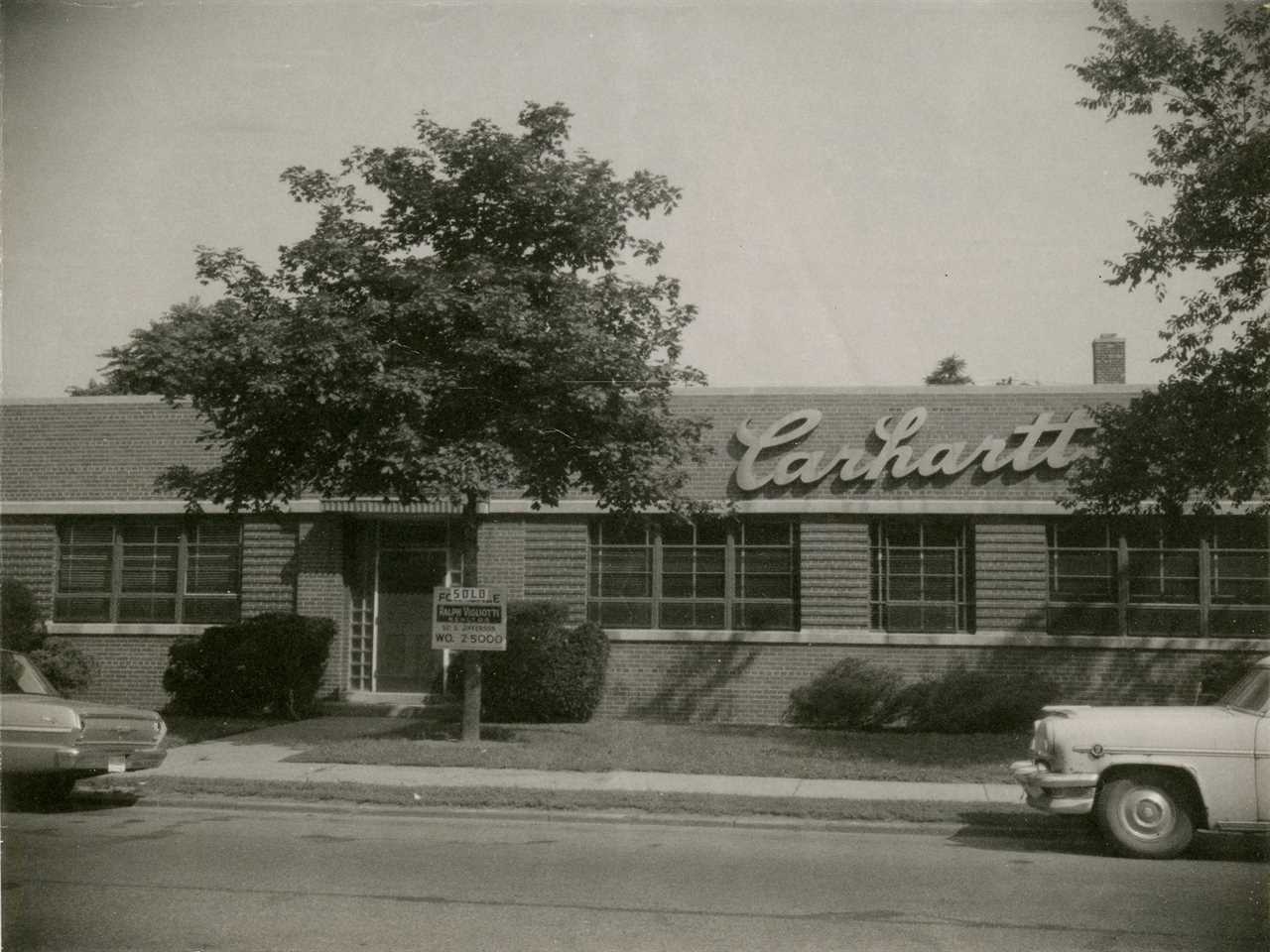
Carhartt
Along with two of his executives — Gust Feles, Carhartt's head of sales, and Don Rasinen, chief of manufacturing — Valade created a new revenue stream for Carhartt: private label clothing.
The company purchased new production facilities and started manufacturing clothing for multiple department stores, including Sears and J.C. Penney, according to Carhartt.
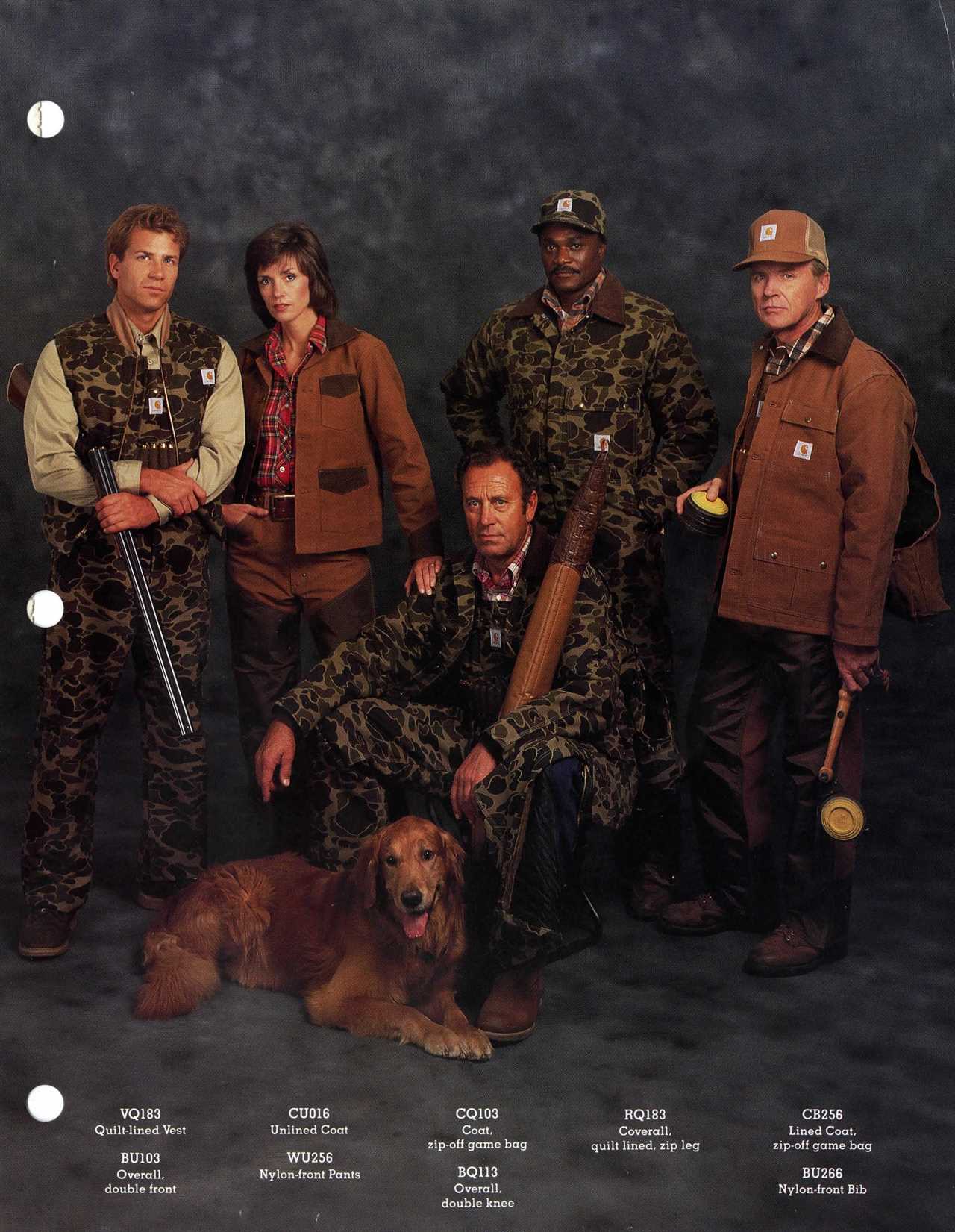
Carhartt
Carhartt launched its first outdoor-wear products in the 1930s: the Super Dux and Super Fab lines, which were aimed at hunters.
Other new products followed. A rugged hooded jacket called the Active Jac came in 1975, and flame-resistant garments arrived in the 1990s, according to Carhartt.
During these decades, the brand's DNA stayed rooted in the blue-collar work that defined Carhartt's inception. In the '70s, workers building the Alaskan oil pipeline began wearing Carhartt, and the brand soon became the de facto Alaska uniform.
Residents of one Alaskan city, Talkeetna, host a Carhartt Ball each year, according to Esquire, and the Alaska State Fair hosts a Carhartt fashion show and a "Crusty Carhartt Tales" competition where locals show off how much of a beating their gear has taken, according to The New York Times.
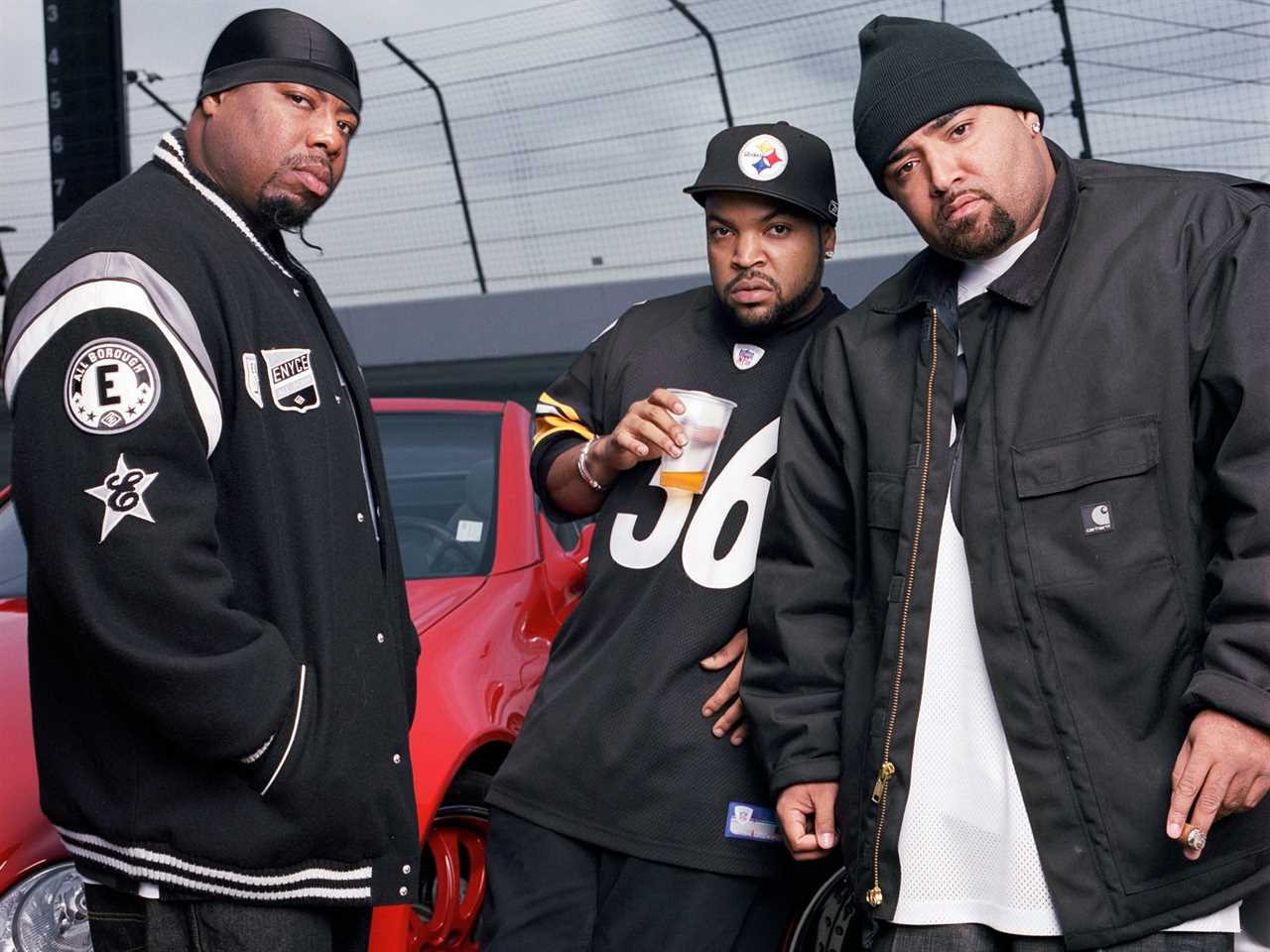
Gregory Bojorquez/Getty Images
In 1990, the record label Tommy Boy Records bought 800 Carhartt jackets and had them embroidered with its logo, distributing them to "tastemakers" like Tupac and Dr. Dre, according to Esquire.
The label's Carhartt connection continued after it signed the group House of Pain, which wore Carhartt's Weathered Duck Detroit jacket in their music video for "Jump Around," according to The Detroit News.
The New York Times declared the mustard-brown and hunter-green Carhartt jacket the must-have outerwear for rappers and cool kids in New York City in the early '90s.
"In New York, hip-hoppers prefer their Carhartts mustard brown and hunter green with baggy corduroy pants stuffed into Timberland boots," The Times wrote.
According to The Times, Carhartt becoming a hip streetwear brand was due in large part to a new type of worker adopting the label's jackets as their uniform: drug dealers.
"They needed to keep warm and they needed to carry a lot of stuff," Steven Rapiel, Carhartt's New York City salesman, said in 1992. "Then the kids saw these guys on the street, and it became the hip thing to wear."
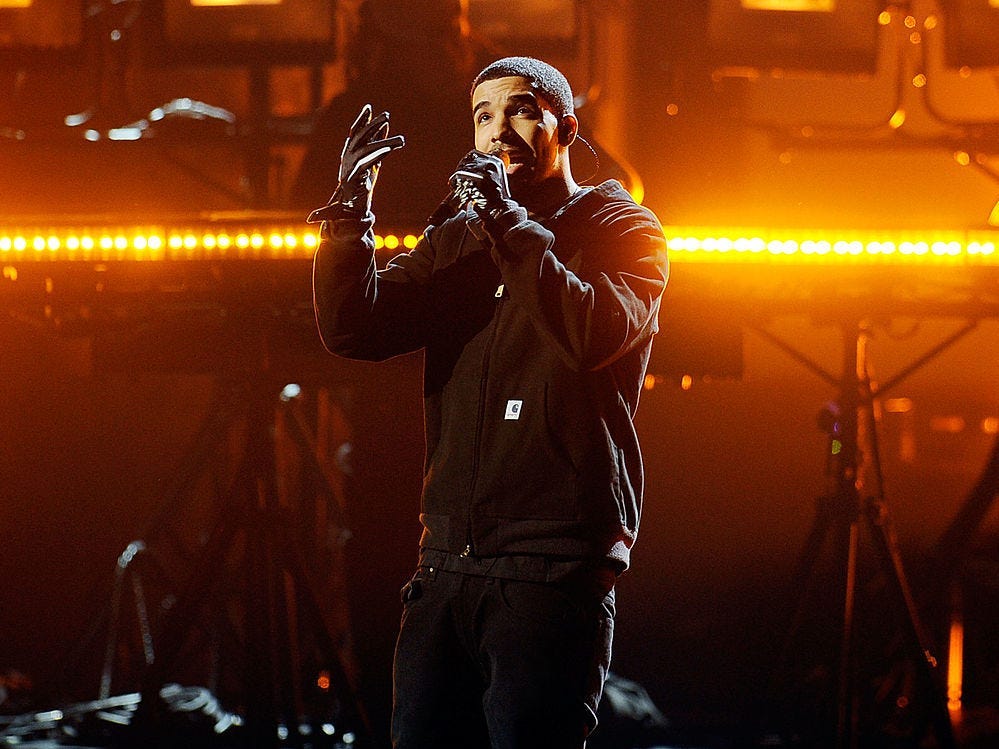
Getty/Kevork Djansezian
In 1989, Edwin Faeh, a German denim entrepreneur, approached Carhartt with a licensing deal that would bring the brand's gear to Europe.
But the European version of Carhartt wasn't an exact dupe — known as Carhartt Work in Progress, the brand skews hipper and more fashion-forward (and more expensive). Soon after its inception, Carhartt WIP was embraced by skateboarders and the hip-hop world, according to Esquire.
The deal allowed Carhartt to reach new customers while maintaining its heritage and not having to "stretch themselves into fashion," Alex Guerrero, Carhartt's global product chief, told The New York Times in 2022.
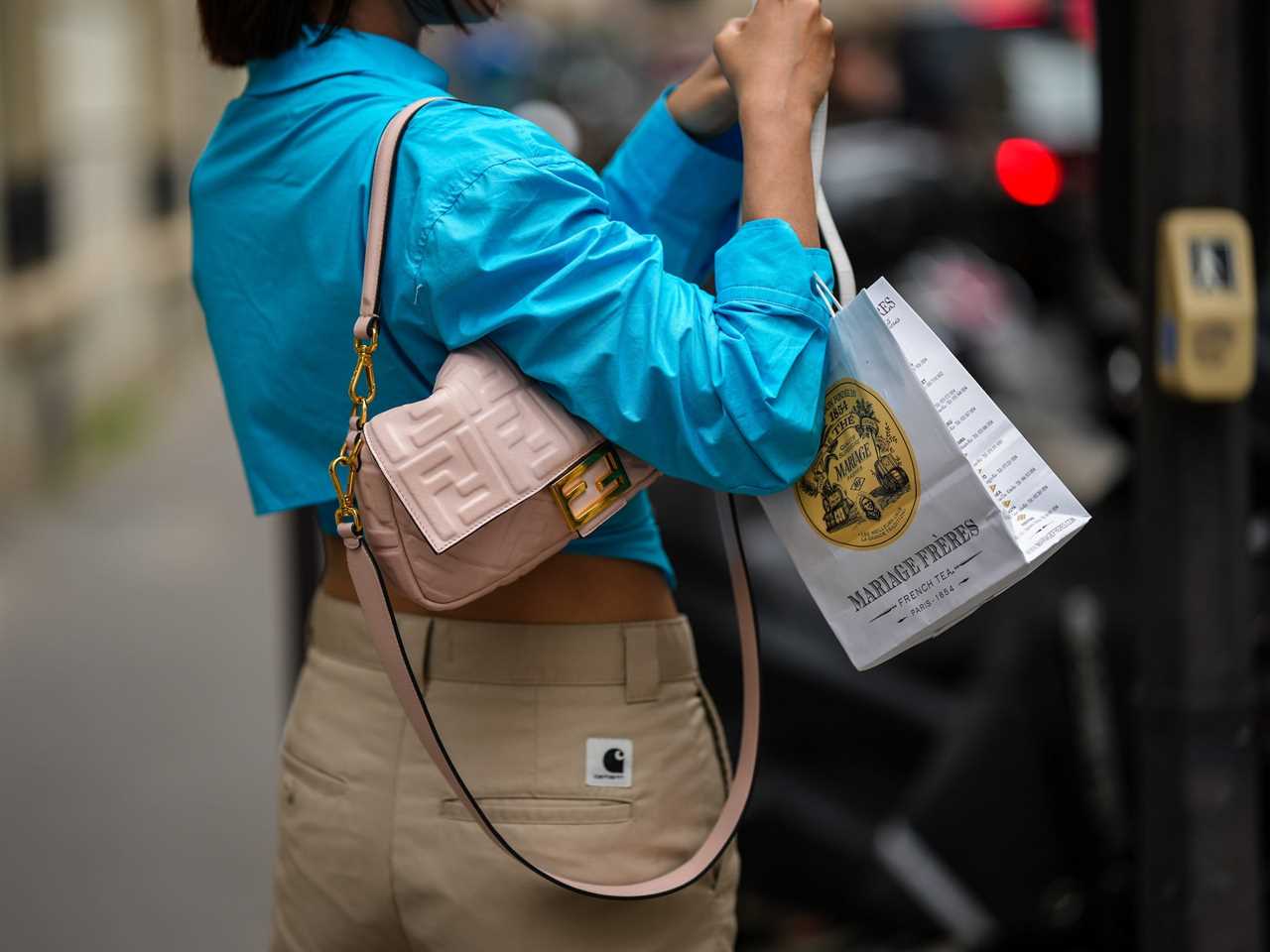
Edward Berthelot/Getty Images
When Carhartt WIP opened its first store in New York's SoHo district in 2011, it basically cemented its credentials as a fashionable streetwear label. Since then, the brand has collaborated with several fashion houses, including Vetements, A.P.C., and Junya Watanabe.
While WIP's offerings take inspiration from the original Carhartt gear, they often have trendier, more fashion-conscious styling and cost sometimes twice as much — a standard Carhartt Chore Coat might start at $100, while a WIP Chore Coat costs $198.

George Bridges/AP
"The Carhartt beanie has become a millennial basic," Marian Park, an editor and trend specialist at WGSN, told New York Magazine in 2018.
The beanie, originally released in 1987, became popular in much the same way Carhartt's other offerings did: skaters started wearing them, and eventually, skatewear and streetwear became fashionable in the US. Rihanna was spotted wearing a bright yellow version, and other celebrities caught onto the trend too. Plus, it's affordable at only $20.
These days, Carhartt sells roughly 4 million of the caps every year, according to The New York Times.
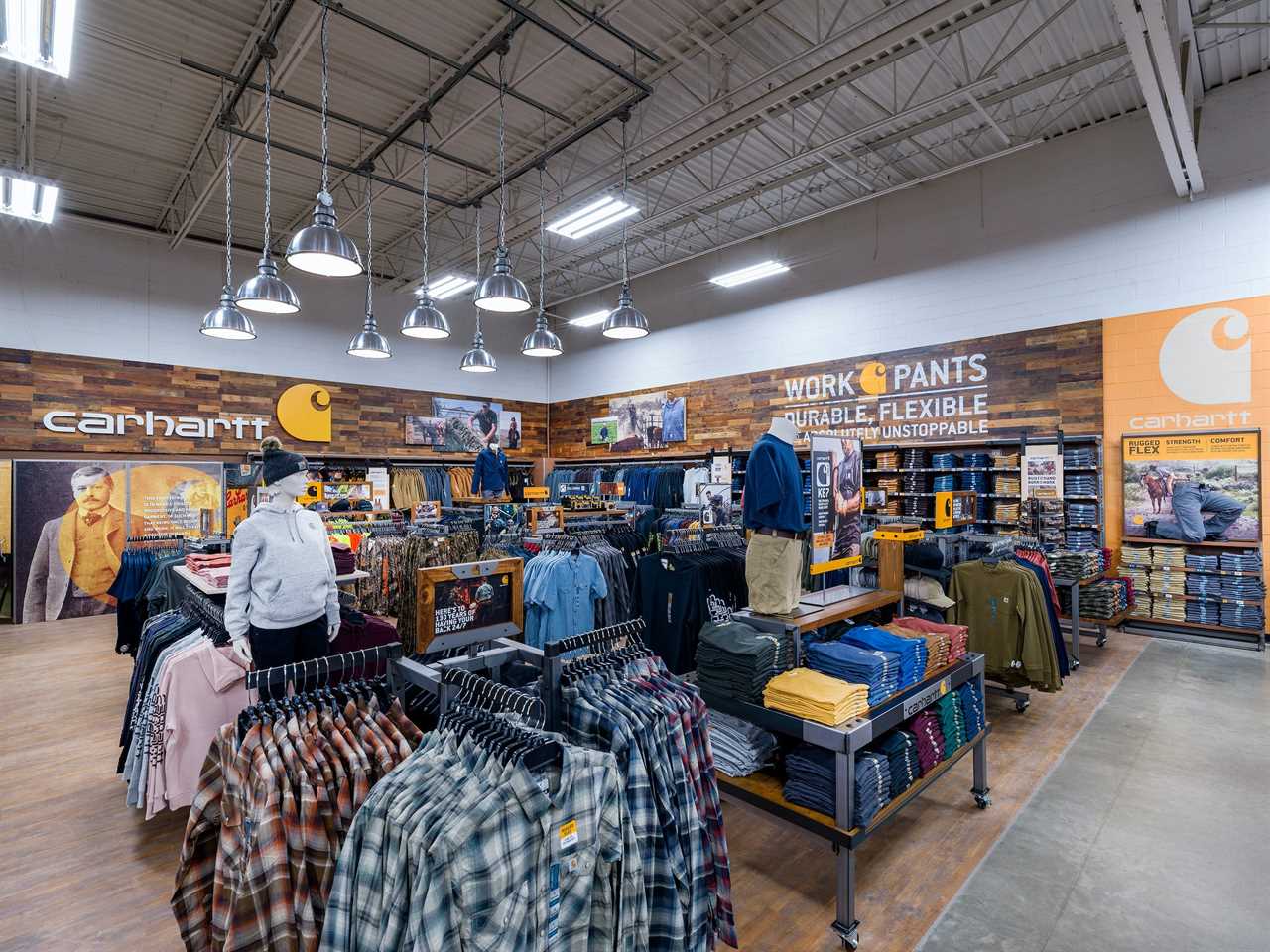
Business Wire
Carhartt hasn't strayed from its working-class roots even as it gained pop culture cachet. In fact, the brand doesn't market to hypebeasts, and it's never courted the rappers, skaters, or fashionistas that love its clothes — in fact, its marketing often features real customers who actually work in Carhartt apparel.
"When you have such a loyal passionate base, you want to make sure that's something you consider and you respect. And what we focus on are the commonalities," Brian Bennett, vice president of creative at Carhartt, told Esquire in 2017.
Carhartt designers visit spots like wind farms or logging sites for inspiration and test their products much like athletic apparel, "except it's not a two-hour workout. It's a 10-hour workday," Janet Ries, Carhartt's vice president of marketing, told The New York Times.
Carhartt also sends its prototypes to a group of 3,000 workers — including ranchers, electricians, and plumbers — to test and give feedback, according to The Times.
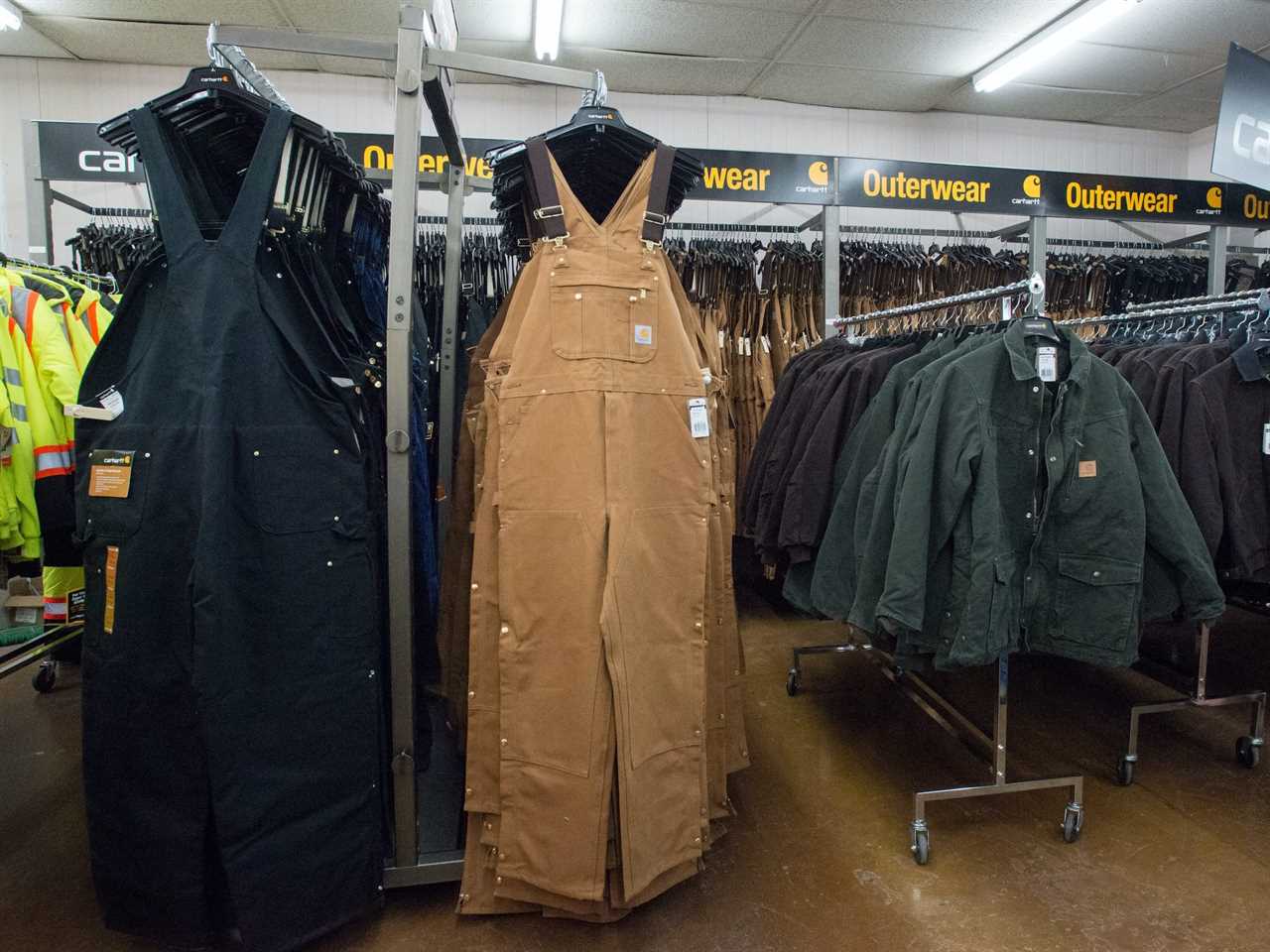
Ken Cedeno/Corbis via Getty Images
While most Carhartt apparel is made in Mexico these days, the company does still produce some clothing in the US at its Kentucky and Tennessee plants. Overall, Carhartt employs 2,700 workers in the US and proudly states that 970 of those workers are members of the United Food and Commercial workers union — they're some of America's last unionized textile workers, according to The New York Times.
Carhartt's pro-union stance dates back to its inception. Hamilton Carhartt once wrote a poem in support of lowering the workday to eight hours instead of 10 or 12 and ran the company not unlike a co-op. In 1905, Carhartt implemented a "profit plan" that gave employees preferred stock, according to Vice.
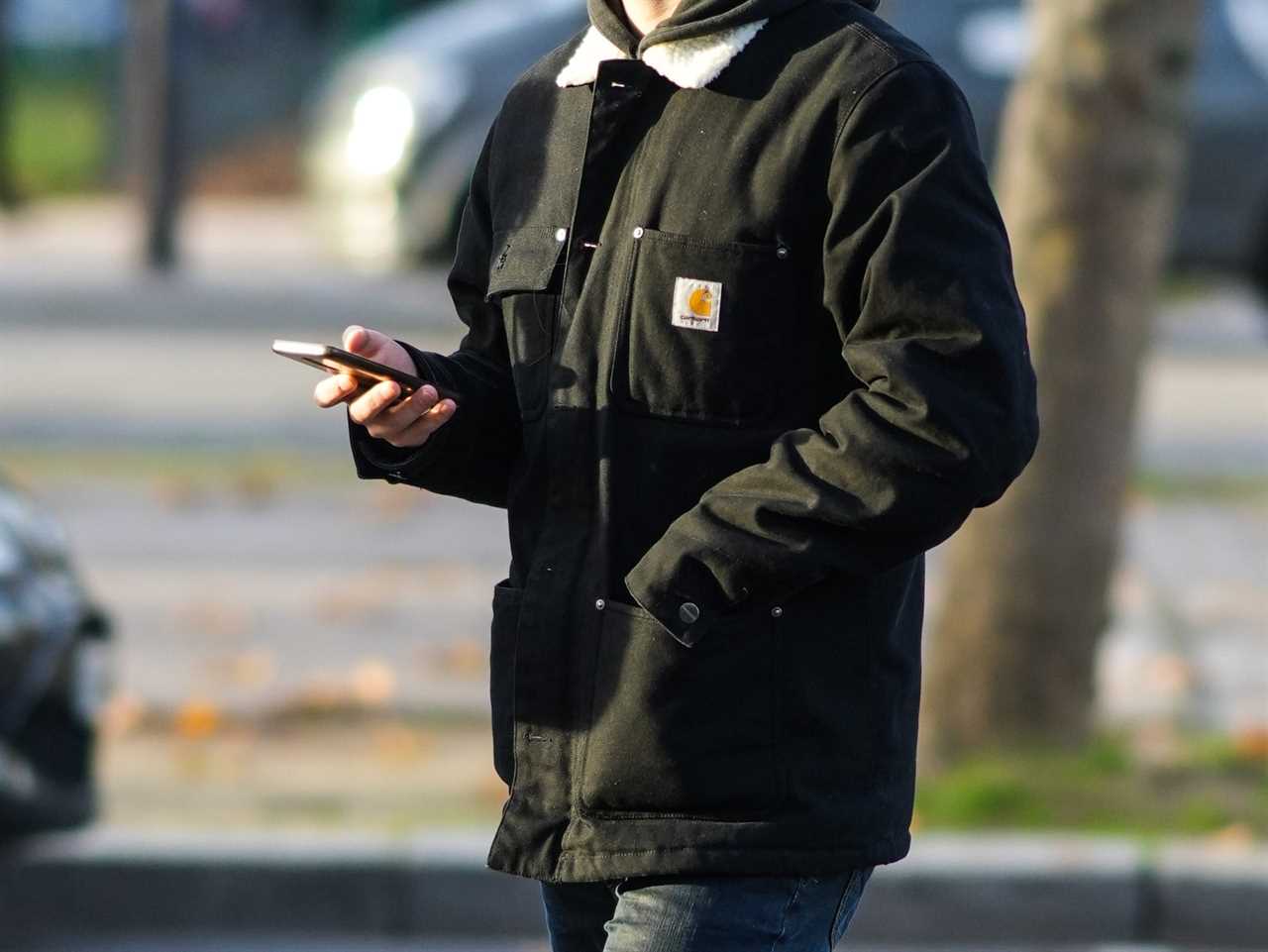
Edward Berthelot/Getty Images
Carhartt sits at an unusual place in the American fashion world: Republican politician Sarah Palin wears Carhartt, and rapper Drake wears Carhartt. You're just as likely to see Carhartt clothing on guests waiting outside fashion shows as you are on a ranch in rural America.
And while that Venn diagram may seem unlikely, it's paying off for Carhartt: the brand isn't required to disclose its financial figures given its status as a private company, but it told CNBC in 2020 that it generated over $1 billion in annual revenue in 2019.
Carhartt says its success is driven by people who value hard work.
"We really are focused on folks who do the hard work and believe in the values of hard work," Tony Ambroza, Carhartt's vice president of marketing, told Insider in 2017. "We're very conscious of the idea that there are folks who grew up in families who may not have the same job that their parents did that was maybe more manual in nature, but they have the values and incredible deep appreciation for the idea of doing and making things yourself."
Read More
By: [email protected] (Avery Hartmans)
Title: The rise of Carhartt, the 133-year-old workwear brand that's beloved by everyone from rappers to celebrities to blue-collar workers
Sourced From: www.businessinsider.com/carhartt-history-popularity-workwear-fashion-trend-2022-11
Published Date: Sun, 27 Nov 2022 11:45:00 +0000
Did you miss our previous article...
https://trendinginbusiness.business/business/how-to-gain-followers-and-grow-an-audience-on-platforms-like-instagram-youtube-and-tiktok
.png)




